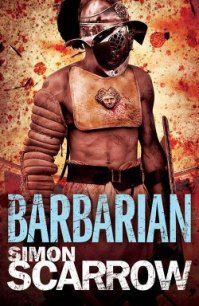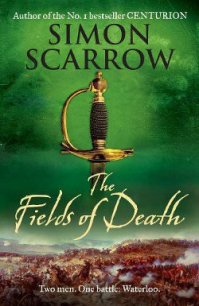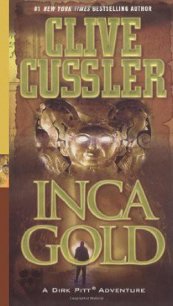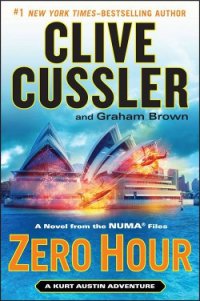Spartan Gold - Cussler Clive (полная версия книги .TXT) 📗
Behind them, Pelletier had dropped the coil of rope and was knotting one end around the base of a column under the glow of the lantern.
“Going down, are we?” Napoleon asked. “Into the pits of hell?”
“Not today, General,” Laurent answered. “Across.”
Laurent aimed his lantern into the tunnel. A few feet inside was an ice bridge, not quite two feet wide, stretching across a crevasse before disappearing into another tunnel.
“You’ve been across?” Napoleon asked.
“It’s quite sturdy. It’s rock beneath the ice. Still, you can’t be too safe.”
He secured the line first around Napoleon’s waist, then his own. Pelletier gave the knotted end a final tug and nodded to Laurent, who said, “Watch your footing, General,” then stepped into the tunnel. Napoleon waited a few moments, then followed.
They began inching their way across the crevasse. At the halfway point, Napoleon looked over the side and saw nothing but blackness, the translucent blue ice walls sloping into nowhere.
At last they reached the opposite side. They followed the next tunnel, which zigzagged for twenty feet, into another ice cavern, this one smaller than the first but with a high, arched ceiling. Lantern held before him, Laurent walked to the center of the cavern and stopped beside what looked like a pair of ice-covered stalagmites. Each one was twelve feet high and truncated at the top.
Napoleon stepped closer to one. Then stopped. He narrowed his eyes. It wasn’t a stalagmite, he realized, but a solid column of ice. He placed his palm against it and leaned his face closer.
Staring back at him was the golden face of a woman.
CHAPTER 1
GREAT POCOMOKE SWAMP, MARYLAND PRESENT DAY
Sam Fargo rose from his crouch and glanced over at his wife, who stood up to her waist in oozing black mud. Her bright yellow chest waders complemented her lustrous auburn hair. She sensed his gaze, turned to him, pursed her lips, and blew a wisp of hair from her cheek. “And just what are you smiling at, Fargo?” she asked.
When she’d first donned the waders he’d made the mistake of suggesting she looked like the Gorton’s Fisherman, which had earned him a withering stare. He’d hastily added “sexy” to the description, but to little effect.
“You,” he now replied. “You look beautiful—Longstreet.” When Remi was annoyed at him she called him by his last name; he always responded in kind with her maiden name.
She held up her arms, coated to the elbows in slime, then said with a barely concealed smile, “You’re crazy. My face is covered in mosquito bites, and my hair is flatter than paper.” She scratched her chin, leaving behind a dollop of mud.
“It simply adds to your charm.”
“Liar.”
Despite the look of disgust on her face, Sam knew Remi was a trouper without peer. Once she set her mind on a goal, no amount of discomfort would dissuade her.
“Well,” she said, “I have to admit, you do look rather dashing yourself.”
Sam tipped his tattered Panama hat at her, then went back to work, scooping mud from around a length of submerged wood he hoped was part of a chest.
For the past three days they’d been plodding through the swamp, searching for that one clue that might prove they weren’t on a wild-goose chase. Neither of them minded a good goose chase—in treasure hunting it came with the turf—but it was always better to catch the goose in the end.
In this case, the goose in question was based on an obscure legend. While the nearby Chesapeake and Delaware bays were said to be home of nearly four thousand shipwrecks, the prize Sam and Remi were after was land based. A month earlier Ted Frobisher, a fellow treasure hunter who’d retired not long ago to concentrate on his antique shop in Princess Anne, had sent them a brooch with an intriguing provenance.
The pear-shaped gold and jade brooch was said to have belonged to a local woman named Henrietta Bronson, one of the first victims of the notorious outlaw Martha “Patty” (a.k.a. Lucretia) Cannon.
According to legend Martha Cannon was a tough, ruthless woman who in the 1820s not only stalked the wilds of the Delaware-Maryland border with her gang, robbing and murdering the wealthy and poor alike, but who also ran a hostel in what was then called Johnson’s Corners, today Reliance.
Cannon would lure travelers into her establishment and feed, entertain, and tuck them in to bed before murdering them in the middle of the night. She would drag the bodies into the basement, take anything of value, then stack them in the corner like cordwood until she’d accumulated enough to warrant a wagon trip to a nearby forest, where she would bury them en masse. Horrific as that was, Cannon would later commit what many considered her most heinous crimes.
Cannon established what many local historians had dubbed a “reverse underground railroad,” kidnapping freed southern slaves and keeping them bound and gagged in the inn’s many secret rooms and its makeshift earthen dungeon before sneaking them in the dark of the night to Cannon’s Ferry, where they would be sold and loaded onto ships headed down the Nanticoke River bound for Georgia’s slave markets.
In 1829, while plowing a field on one of Cannon’s farms, a worker uncovered several partially decomposed bodies. Cannon was speedily indicted on four counts of murder, found guilty, and sentenced to prison. Four years later she died in her cell by what most agreed was suicide by arsenic.
In subsequent years both Cannon’s crimes and her ultimate demise grew in myth, ranging from the claim that Cannon had escaped from prison and went on murdering and robbing far into her nineties, to tales that have her ghost still roaming the Delmarva Peninsula, waylaying unsuspecting hikers. What few people disputed was that Cannon’s loot—of which she’d reportedly spent only a fraction—had never been recovered. Estimates put the treasure’s present-day value somewhere between $100,000 and $400,000.
Sam and Remi had of course heard the legend of Patty Cannon’s treasure, but lacking solid leads they’d consigned it to the “someday” file. With the emergence of Henrietta Bronson’s brooch and an exact datum with which to begin their search, they’d decided to tackle the mystery.
After a detailed study of the Pocomoke’s historical topography and mapping Cannon’s alleged hideouts in comparison to where the brooch had been found, they’d narrowed their search grid to a two-square-mile area, most of which lay deep within the swamp, a labyrinth of moss-draped cypress trees and brush-choked bogs. According to their research this area, which in the 1820s had been dry ground, had been home to one of Cannon’s hideouts, a tumble-down shack.
Their interest in Cannon’s treasure had nothing to do with the money—at least not for their own benefit. Upon first hearing the story, Sam and Remi agreed if they were ever lucky enough to find the treasure, the bulk of the proceeds would go to the National Underground Railroad Freedom Center in Cincinnati, Ohio, an irony they felt sure would outrage Cannon if she were still alive. Or, if they were lucky, it would outrage her ghost.
“Remi, what was that poem . . . the one about Cannon?” Sam called. Remi had a near-photographic memory for details, both obscure and pertinent.
She thought for a moment, then recited:
“Hush your mouth
Go to sleep
Old Patty Ridenour take you back deep
Got a gang of seven
Taking slave and free
Riding day and night




